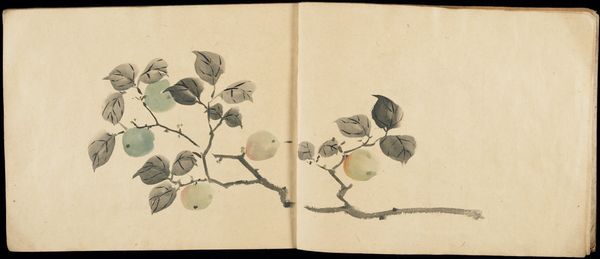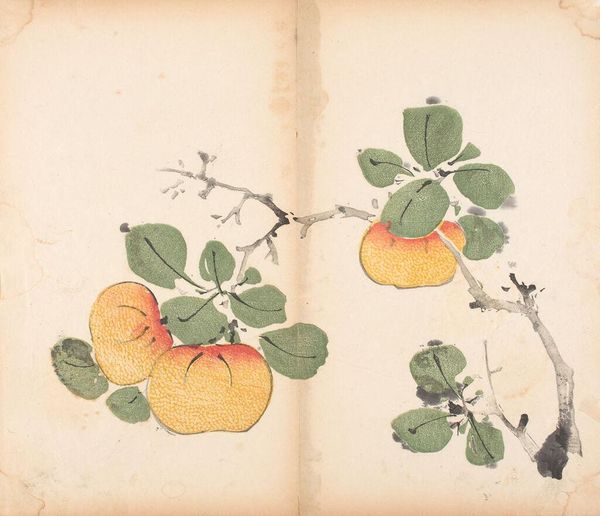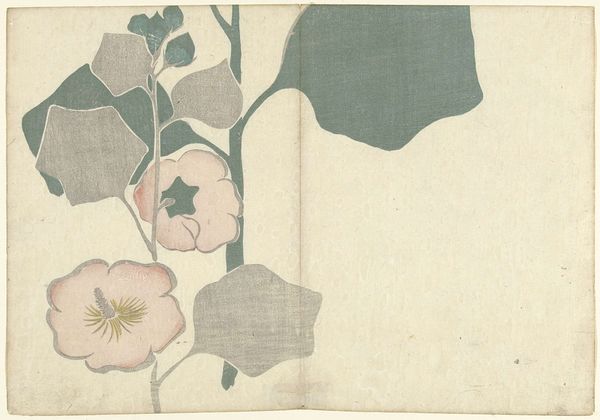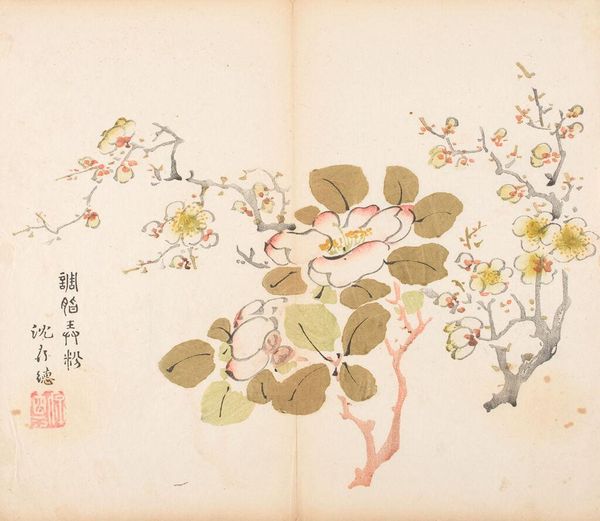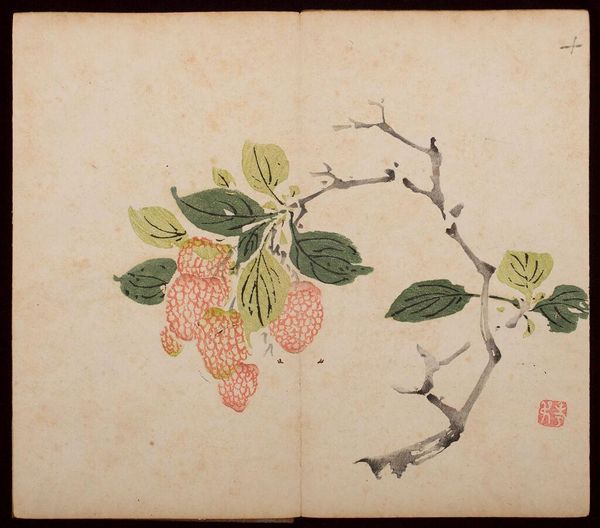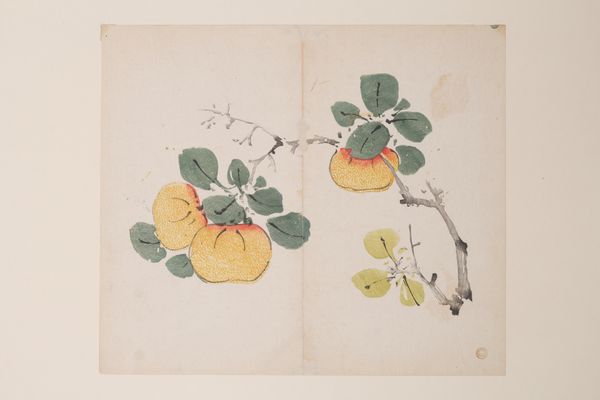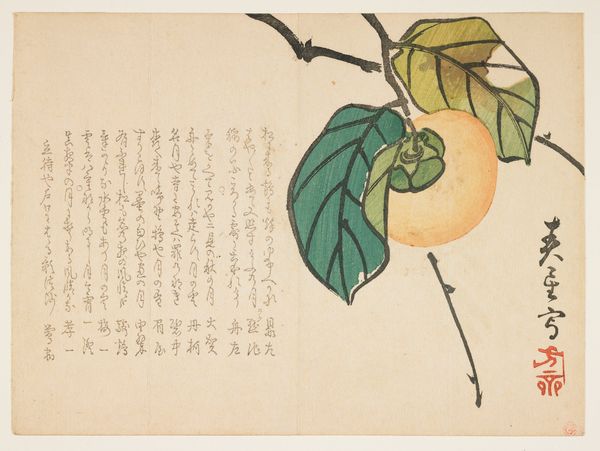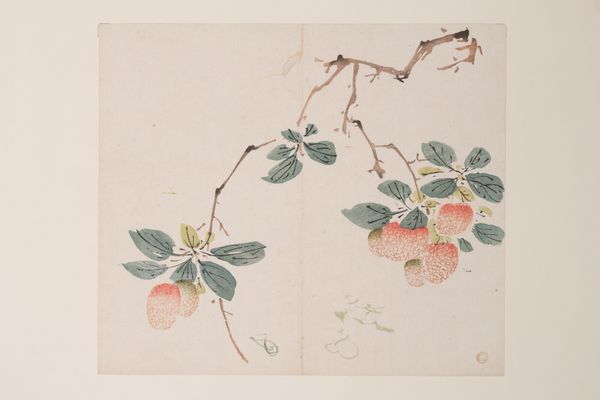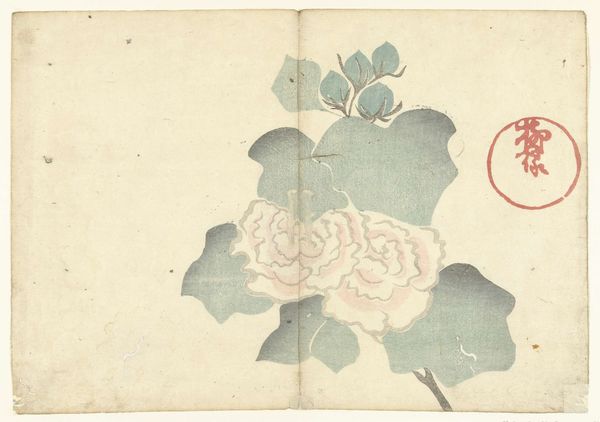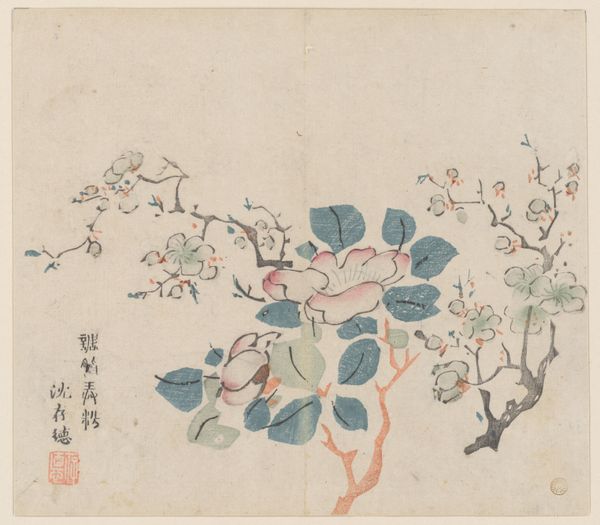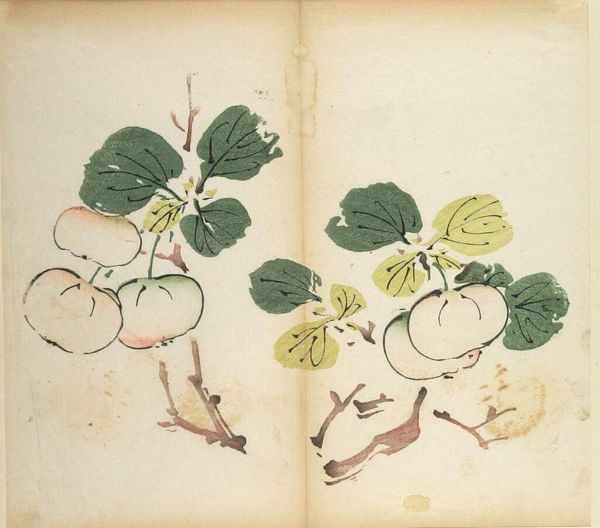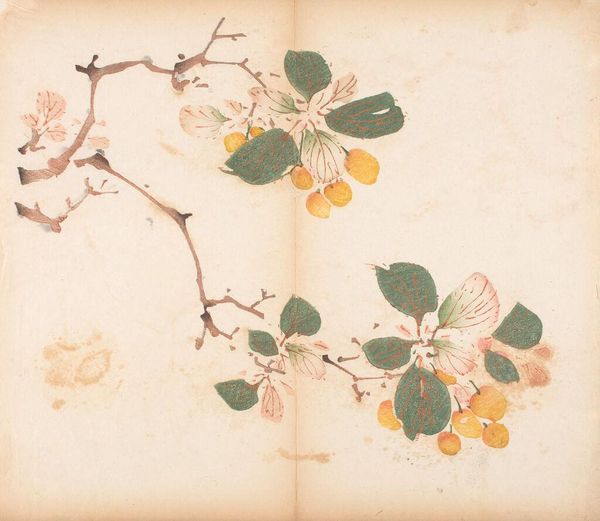
print, woodblock-print
# print
#
asian-art
#
flower
#
ukiyo-e
#
woodblock-print
#
geometric
Dimensions: height 256 mm, width 367 mm
Copyright: Rijks Museum: Open Domain
Editor: So this vibrant print, "Gestileerde gele en roze bloemen" from 1826, by Nakamura Hōchū, is made with woodblock printing. It’s so charmingly simple! The flowers almost feel like graphic design elements. What significance did such images have for people at that time? Curator: These *ukiyo-e*, or "pictures of the floating world," like this one, were incredibly important to the rising merchant class in Edo-period Japan. Prior to this, art was largely commissioned by and circulated amongst the elite. Prints such as these became available to the public. Editor: That makes it almost a democratisation of art. So, the subject matter, the stylized flowers, speaks to a different kind of patron than the art of the court, then? Curator: Precisely! While flowers were always symbolic, often associated with fleeting beauty and the seasons, their appearance in *ukiyo-e* made that symbolism accessible on a broader scale. Think about who could purchase such a print, decorate their homes, and participate in this visual culture. Did it perhaps allow them a subtle form of social and political commentary, through something seemingly as innocuous as floral art? Editor: Interesting, a sort of quiet visual statement of their own cultural tastes and values… I’d never considered that before! Thank you. Curator: It illustrates that the way we understand and engage with even decorative art is intimately shaped by cultural accessibility, as well as how public spaces could showcase personal or collective identities. We’ve both learned something, I think.
Comments
No comments
Be the first to comment and join the conversation on the ultimate creative platform.
